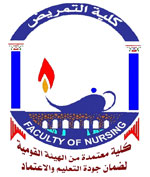Background and aim: Knee osteoarthritis considered as a foremost cause of disability globally, with a substantial societal impact and an increasing financial burden on healthcare systems. School teachers estimated as one of the professions with a high frequency of occupational musculoskeletal illnesses. The study aimed to assess knowledge and associated risk factors of knee osteoarthritis among school teachers. Subjects and Method: Descriptive cross-sectional design. Setting: Nine schools representing 10% of the total Assiut City schools which selected randomly. Sample: Total of 749 teachers. Study tools: Two tools were used; Tool (I): Five parts; personal data, chronic diseases, data of knee pain, risk factors of knee osteoarthritis and school teachers knowledge. Tool (II): Knee Injury and Osteoarthritis Outcome Score scale. Results: It found that 42.6% aged 40 -< 50, 56.9% female and 80.2% were overweight and obese, 51.3% of teachers suffering from knee pain and 70.2% had poor knowledge which affected by age, educational level, residence and years of experience. As well as, pain and symptoms subscales of Knee Injury and Osteoarthritis Outcome were significantly linked with age, sex and body mass index. Conclusion and recommendations: There were deficient of knowledge about knee osteoarthritis. Furthermore, the most significant risk factors were age, female sex, urban residence, body mass index more than or equal 25 (kg/m2 ), married status, presence of chronic diseases, education and family history. It was recommended that health education program about knee osteoarthritis should be provided for school teachers.
تاريخ البحث
قسم البحث
مجلة البحث
Tanta Scientific Nursing Journal
المشارك في البحث
عدد البحث
28
سنة البحث
2023
صفحات البحث
247-268
ملخص البحث

